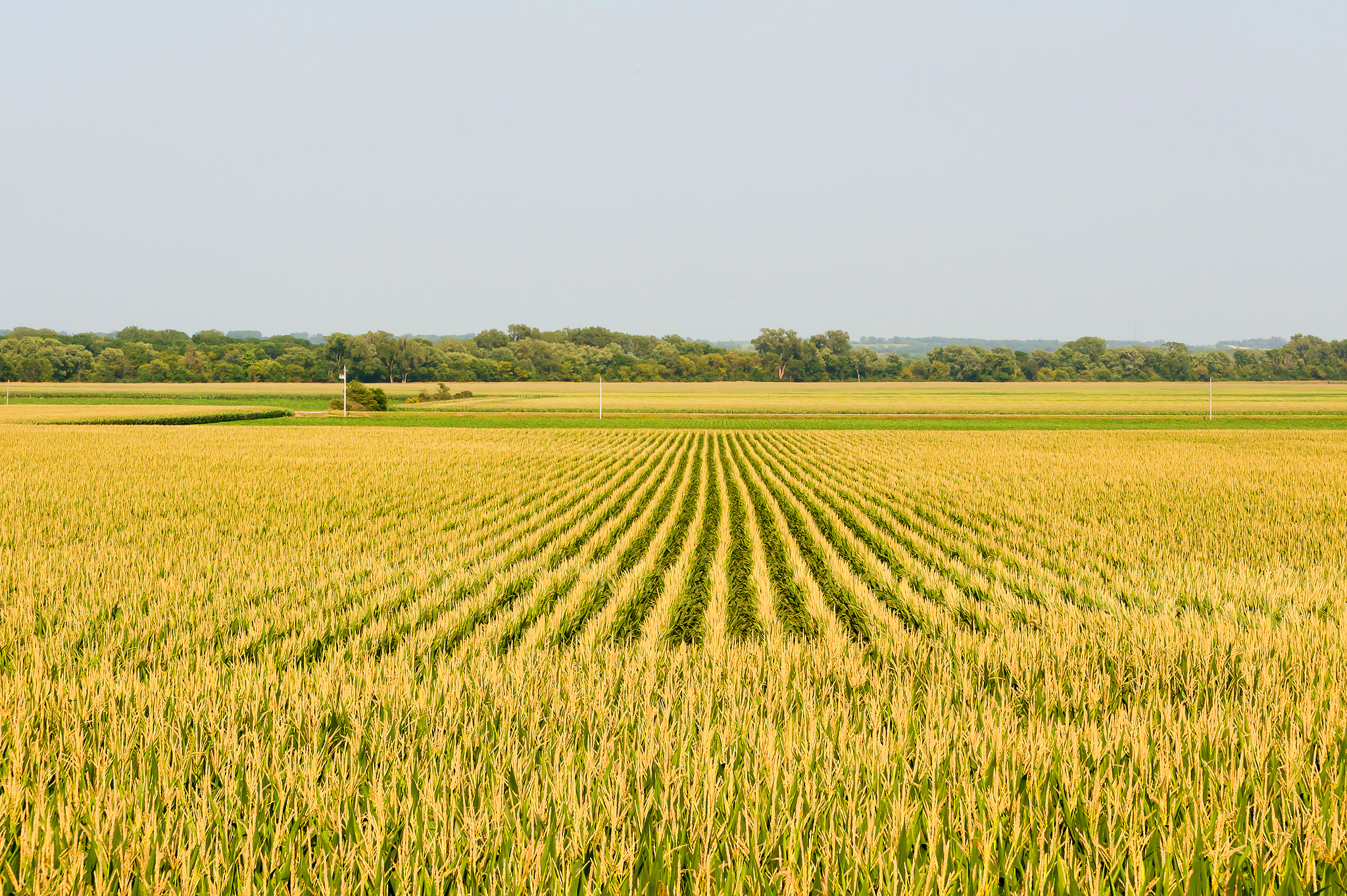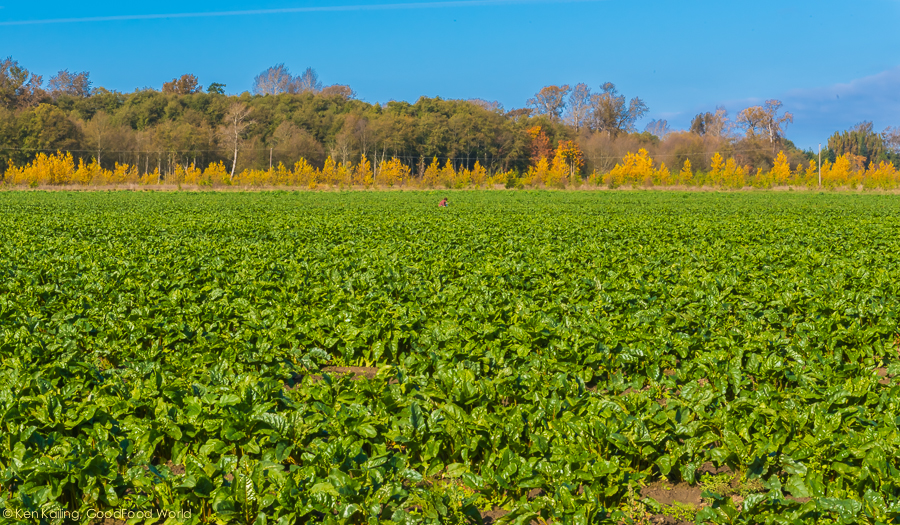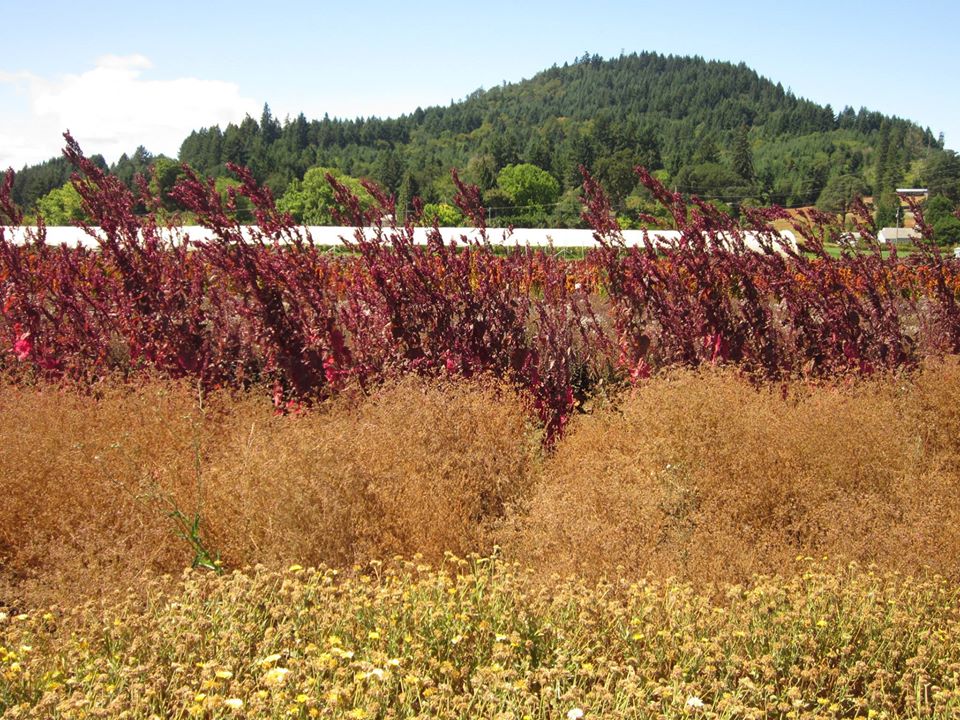(Editor’s Note: John Navazio, respected plant breeder at both Oregon State University Extension and Washington State University Extension, has joined Johnny’s Selected Seeds in Winslow Maine, where he’ll be head of their plant breeder program.)
Seed is Life. Soil is Life. Water is Life.
To increase profitability – and productivity – industrial agriculture has mechanized production processes and reduced options to a few highly controlled varieties. In the beginning of factory farming, one size was supposed to fit all and the landscape everywhere (including water and micro-climates) was to be engineered to accommodate only the selected commercial variety of plant or animal.
Of course, such defiance of nature caused serious problems and local ecosystems were thrown out of balance. The soil dried up and blew away. Insects and weeds invaded crops and destroyed yields. And so the arch controllers of nature invented pesticides and herbicides – and a highly profitable chemical industry was born to rule over the land.
But the mono-crops became weak and increasingly vulnerable. And people got sick from the toxic residues. So genetic engineering was advanced to restore hybrid vigor and camouflage the increased use of chemicals.
Never were natural processes recognized in the context of ecosystems that had evolved to be stable over eons of time with inherent life adapting in place. What use would that be, to rely on, fit with and further the health of the environment? It wouldn’t be profitable! To make money, you need to create (or control) something – it can’t be free! It has to be engineered.
Capitalism and the accompanying industrial revolution promised to free us from the bonds of nature, limit the quality and variety of products, and greatly increase the quantity of sales necessary to consolidate power and wealth. Over the relative short time the industrial system has been in place, it has separated us entirely from our organic roots – physically and spiritually. And everything has become artificially fabricated outside of nature: our society, our religions, and certainly most of our food.

But it’s not working. Humans have not achieved real dominance and control over nature, as displayed most clearly with the degradation of food and human health. Still the genius of engineers, funded by capital investors to produce profitable GMOs, isn’t keeping up with climate change. One of many knee-jerk reactions is to try and bank “life” in some kind of vault to preserve it.
Logically, one might collect (and/or produce) seeds and move them around to mapped locations in order to produce viable crops in areas under new climate stress. We need to act quickly. However, the intact natural ecosystems the seed is associated with (the living soils and supportive living organisms, etc.) can’t to be moved around with the seed. Unfortunately, climate change isn’t uniform, local conditions aren’t predictable and, oh my, present industrial agricultural operations are too large and not adaptable.
Further, existing governments, always slow to respond to crisis when special interests are involved; agencies like the USDA, ruled by corporate interests to start; and academics now ruled by companies like Monsanto are unable to appreciate the urgency of the rapidly changing climate on our food supply.
Universities, which are required to maintain some public function as land grant institutions (meaning they can’t entirely serve special private interests), are given over to allowing a few professors to spend money on token “organic seed” projects and natural plant breeding, while just down the hall major labs are conducting multimillion dollar genetic engineering research. It’s mind-boggling isn’t it? There’s no common ethical principle – it’s all just about money.
One can only guess at the extent of industrial engineering now mobilizing – along with the accompanying propaganda – to help combat climate change.
The contrived industrial model will force already failing industrial farm operations to be reconstructed to fit newly mapped locations now expertly delineated to agree with the increasingly erratic but more extreme climate.
Unfortunately, such hasty remodeling won’t work because it fails to account for the key variables, especially the intrinsic evolutionary physiology and supporting natural landscapes. More and more of the natural ecological support structures that are presently holding our food system together will be lost to maintain a social-economic state presently growing out-of-bounds like a cancer.
As an alternative, if even a few smart and dedicated stewards are allowed to start at the other end with recovering and rebuilding natural ecosystems on a regional and local scale, mapping ecosystem resiliency (in the face of our changing climate) along with natural landscape functions, and redesigning agricultural operations to fit, there may be some hope.
Obviously, remodeling our future on the lines of ecosystem resiliency would require down-scaling – actually forcing food producers to cooperate as many small organic farming operations already are.

What about the seeds? Yes, seeds represent a bank of evolutionary inheritance, at least as much as is left to collect. But seeds can’t germinate without soil and water, and both are irreplaceable, connected to the living systems that evolved with – and gave rise to – the seeds.
When I was a kid 60 years ago, we were collecting and trading traditional seed in our farm community, and my grandparents collected and shared their own seed before us. Traditional farmers have known that “seed matters” since the country was settled and nothing changed until corporations (with the help of government) began removing the seed saving privilege.
The problem is this: seeds need a place to grow; not just a place to grow but also a place that matches the seed. Not a new place, but the pre-existing ecosystem where the seed was produced, or something that closely mimics the original ecology.
The challenge then is to rediscover and restore as much of the local resiliency expressed in the natural ecosystems we have left and to replant the seed accordingly. The quality of the soil and water is as important as the seed; that is to say, without it (like we humans), the seed will die.
Seed is Life. Soil is Life. Water is Life.
We need it all and we can’t make it; the whole ecosystem matters. Holistic management matters – and seed is part of it.
Additional Reading
The Illusion of Diversity – Seed Patents
What’s So Special About Organic Seed?
The Importance of Seed, Frank Morton
Tom Stearns, Founder of High Mowing Organic Seeds
How I Became a Plant Breeder
Books
The Organic Seed Grower: A Farmer’s Guide to Vegetable Seed Production, By John Navazio
An Orchard Invisible: A Natural History of Seeds by Jonathan Silvertown
Carol Deppe’s New Seed Offerings
Photo credit: Iowa cornfield Carl Wycoff (Used with permission under Creative Commons license)

